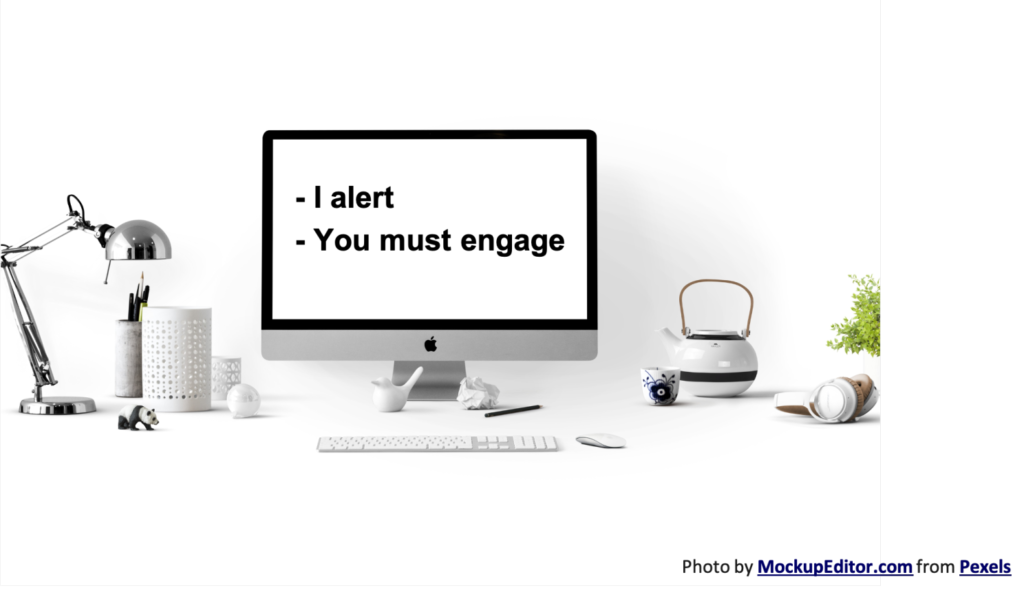Balancing Customer Alerts and Push Notifications in Business
Customer alerts and push notifications are everywhere, crossing devices and platforms to reach your audience. Think about it – your customers receive a barrage of these messages daily, each one competing for their attention.
For businesses, these notifications are powerful tools, offering direct, timely communication through mobile devices. They drive engagement, boost app usage, and influence conversions.
But beware, they can also backfire if not used wisely. In this blog, we’ll guide you on harnessing customer alerts and push notifications effectively. Let’s strike the right balance between engagement and exasperation.
Alert to the Customer Alert
During a business meeting on Zoom, Teams, or Google Meet (whatever happened to Skype?), our focus is unwavering—or so we think. That is until a service alert or push notification makes its presence known.
I receive notifications for a multitude of reasons. Many I can easily ignore, like a marketing email, an unknown caller, or a reminder from a hotel booking site. These are what I call Code 3’s, or even Code 4’s—tasks to address at my leisure or not at all.
Then there are the Code 1’s—the ones that demand immediate attention, much like a smoke alarm or a baby monitoring system when our children were infants. These alerts are unmistakable, and they jolt us into action.
In between are the Code 2’s—alerts that could be important but are often manageable later. A fraud alert from the bank, a neighbour notifying me of my car’s lights, or an email with research group transcriptions. These, too, vary in urgency depending on the meeting’s context.
But when I’m engrossed in a meeting, discerning between Code 2’s, 3’s, and 4’s becomes a challenge.
Omni Channel Alerts Increases Complexity for Customers
Organisations aspire to achieve omni-channel status, but what often escapes notice is that this approach opens customers to contact from every conceivable direction. Code 1 through 4 alerts inundate us through the same channels and, in many cases, across multiple channels.
‘Omni’ may sound like it simplifies things, but as the dictionary defines it, it’s about being ‘in all ways or places.’ Thus, it augments customer intrusion and complexity.
Ask customers if they want to be accessible in every conceivable manner, and most would likely decline. Yet, our brains are wired to respond to immediate threats. Ignoring an alert can be a formidable task, especially when it’s designed—frequency, channel, audio, wording—to commandeer our attention. It’s made even more irresistible because each time we succumb, a tiny amount of dopamine is released.
This constant alert barrage affects our behaviour, specifically our ability to focus. On average, we switch digital channels 37 times per hour, allocating less than 2 minutes to each task, as revealed by Onlineuniversities.com.
The Responsibility of Customer Experience
If your role centres on user experience or customer experience, you’ve likely been in design workshops where the consensus is to send customers alerts about delivery dates, campaign launches, renewals, and more. To make these alerts engaging, you might have added emojis, quips, sonic logos, or even a confetti burst when they’re opened. But I urge you to reconsider.
Remember, it’s the customer’s world, and we merely inhabit it.
As a customer, I’m often engaged in a meeting, or even if I’m not, the next service alert or push notification is unlikely to reshape my world. Ignoring it probably won’t imperil my existence. However, it’s not guaranteed to be inconsequential either. So, in the grand scheme, I’ll probably survive.

When practising human-centric design, extend empathy toward the customer. Provide context for the significance of your alert in their world. If you’re uncertain, find out. Understand their pressing concerns and evaluate whether your service alert or push notification assists or hinders. Could there be a better way? Can you collaborate with others to coordinate alerts rather than compete for attention?
Empathise with your customer in their world, not against yours
Empathy extends beyond the ‘on us’ experience. Think beyond gathering feedback on return policies or extending early bird discounts via alerts. Put yourself in your customer’s shoes. Comprehend what genuinely matters and why. Only then can you personalise alerts to align with their world.
Some may call it personalisation, but I prefer not to until you truly understand what’s important to the customers and why. First, personalise to their world’s priorities. Until then, apply common sense and courtesy, residing in the customer’s world alongside their priorities, rather than clamouring for their attention because it aligns with your goals.
Perspective is one of the most potent tools in CX. Use it often.
Empthy is one of the seven mindset traits of customer-centric leaders. If you’d like to sharpen your CX skills, get in touch and ask about our ‘CX Mindset Gym’.



